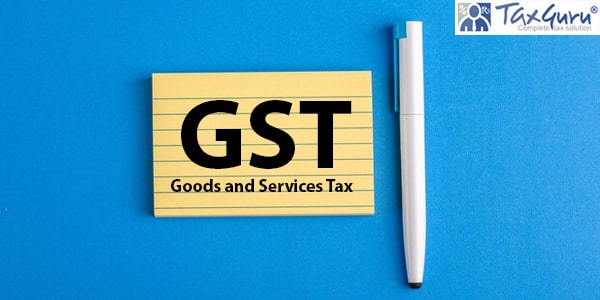Oh Yes, It’s Happy July 2019 Now!!! Pleasant Clarifications on GSTR 9 and GSTR 9C
Every GST Taxpayer and Tax Professional was confused about manner of Filing of GST Annual Return for FY 2017-18. Complicated form forced the government to extend the due date from 30th June 2019 to 31st August 2019. But still there were lot of issues to be answered and now it’s a New Month and welcome step by government to clarify the most awaited Answers. Oh Yes, it’s not just “July” but the “Happy July” for GST Return Filers. Government has clarified many issues through Press Release dated 03/07/2019 on “Clarification regarding Annual Returns and Reconciliation Statement”. Point wise Press Release has been analyzed in this article for the benefit of Stakeholders.
1. No Penalty for Payment of any unpaid tax:
Section 73 of the CGST Act provides a unique opportunity of self – correction to all taxpayers i.e. if a taxpayer has not paid, short paid or has erroneously obtained/been granted refund or has wrongly availed or utilized input tax credit then before the service of a notice by any tax authority, the taxpayer may pay the amount of tax with interest.
In such cases, no penalty shall be leviable on such tax payer (Good News No.1) Therefore, in cases where some information has not been furnished in the statement of outward supplies in FORM GSTR-1 or in the regular returns in FORM GSTR-3B, such taxpayers may pay the tax with interest through FORM GST DRC-03 at any time. In fact, the annual return provides an additional opportunity for such taxpayers to declare the summary of supply against which payment of tax is made.
2. Unpaid Tax to be Deposited & Excess Tax Paid to be Refunded
Time and again taxpayers have been requesting as to what should be the primary source of data for filing of the annual return and the reconciliation statement. There has been some confusion over using FORM GSTR-1, FORM GSTR-3B or books of accounts as the primary source of information.
It is important to note that both FORM GSTR-1 and FORM GSTR-3B serve different purposes. While, FORM GSTR-1 is an account of details of outward supplies, FORM GSTR-3B is where the summaries of all transactions are declared and payments are made. Ideally, information in FORM GSTR-1, FORM GSTR-3B and books of accounts should be synchronous and the values should match across different forms and the books of accounts.
If the same does not match, there can be broadly two scenarios, either tax was not paid to the Government or tax was paid in excess. In the first case, the same shall be declared in the annual return and tax should be paid and in the latter all information may be declared in the annual return and refund (if eligible) may be applied through FORM GST RFD-01A (Good News No.2)
3. ITC can’t be availed or reversed through Annual Return:
No input tax credit can be reversed or availed through the annual return. If taxpayers find themselves liable for reversing any input tax credit, they may do the same through FORM GST DRC-03 separately. Thus, GSTR 9 don’t have any impact on Credit Ledger.
4. Clarification on Excess ITC in GSTR 2A:
There appears to be some confusion regarding declaration of input tax credit in Table 8 of the annual return. The input tax credit which is declared / computed in Table 8D is basically credit that was available to a taxpayer in his FORM GSTR-2A but was not availed by him between July 2017 to March 2019. The deadline has already passed and the taxpayer cannot avail such credit now. There is no question of lapsing of any such credit, since this credit never entered the electronic credit ledger of any taxpayer. Therefore, taxpayers need not be concerned about the Positive values reflected in this table 8D. (Good News No.3) This is merely information that the Government needs for settlement purposes.
5. Mismatch in Actual GSTR 2A v/s. Table 8A of GSTR 9:
Figures in Table 8A of FORM GSTR-9 are auto-populated only for those FORM GSTR-1 which were furnished by the corresponding suppliers by the due date. Thus, ITC on supplies made during the financial year 2017-18, if reported beyond the said date by the corresponding supplier, will not get auto-populated in said Table 8A.
It may also be noted that FORM GSTR-2A continues to be auto-populated on the basis of the corresponding FORM GSTR-1 furnished by suppliers even after the due date. In such cases there would be a mis-match between the updated FORM GSTR-2A and the auto-populated information in Table 8A. It is important to note that Table 8A of the annual returns is auto populated from FORM GSTR-2A as on 1st May, 2019.
6. Reporting of ITC on Imports:
In the press release on annual return issued earlier on 4th June 2019, it has already been clarified that all credit of IGST paid at the time of imports between July 2017 to March 2019 may be declared in Table 6E. If the same is done properly by a taxpayer, then Table 8I and 8J shall contain information on credit which was available to the taxpayer and the taxpayer chose not to avail the same. The deadline has already passed and the taxpayer cannot avail such credit now.
There is no question of lapsing of any such credit, since this credit never entered the electronic credit ledger of any taxpayer. Therefore, taxpayers need not be concerned about the values reflected in this table 8J. (Good News No.4) This is information that the Government needs for settlement purposes.
7. Difficulty in reporting of information regarding Supply received from Composition Dealer & HSN Wise Summary of Inward Supply:
There have been a number of representations regarding non-availability of information in Table 16A (Supply from Composition Dealer) or Table 18 (HSN Wise Summary of Inward Supply) of Annual return in FORM GSTR-9. It has been observed that smaller taxpayers are facing a lot of challenge in reporting information that was not being explicitly reported in their regular statement/returns (FORM GSTR-1 and FORM GSTR-3B).
Therefore, taxpayers are advised to declare all such data /details (which are not part of their regular statement/returns) to the best of their knowledge and records. This data is only for information purposes and reasonable/explainable variations in the information reported in these tables will not be viewed adversely. (Very Good News No.5)
8. Are you also confused about Exempted, Nil Rated and Non-GST Supply?
It has been represented by various trade bodies/associations that there appears to be some confusion over what values are to be entered in Table 5D, 5E and 5F of FORM GSTR-9. Since, there is some overlap between supplies that are classifiable as exempted and nil rated and since there is no tax payable on such supplies, if there is a reasonable/explainable overlap of information reported across these tables, such overlap will not be viewed adversely. (Good News No.6)
9. Clarification on Reporting of No Supply / Non GST Supply
The other concern raised by taxpayers is the inclusion of no supply in the category of Non-GST supplies in Table 5F. For the purposes of reporting, non-GST supplies includes supply of alcoholic liquor for human consumption, motor spirit (commonly known as petrol), high speed diesel, aviation turbine fuel, petroleum crude and natural gas and transactions specified in Schedule III of the CGST Act.
10. Reverse charge in respect of FY 2017-18 paid during FY 2018-19:
Many taxpayers have requested for clarification on the appropriate column or table in which tax which was to be paid on reverse charge basis for the FY 2017-18 but was paid during FY 2018-19. It may be noted that since the payment was made during FY 2018-19, the input tax credit on such payment of tax would have been availed in FY 2018-19 only.
Therefore, such details will not be declared in the annual return for the FY 2017-18 and will be declared in the annual return for FY 2018-19. (Good News No.7) If there are any variations in the calculation of turnover on account of this adjustment, the same may be reported with reasons in the reconciliation statement (FORM GSTR-9C).
11. Role of chartered accountant or a cost accountant in certifying reconciliation statement:
There are apprehensions that the chartered accountant or cost accountant may go beyond the books of account in their recommendations under FORM GSTR-9C. The GST Act is clear in this regard. With respect to the reconciliation statement, their role is limited to reconciling the values declared in annual return (FORM GSTR-9) with the audited annual accounts of the taxpayer. (Good News No. 8)
12. Turnover for eligibility of filing of reconciliation statement:
It may be noted that the aggregate turnover i.e. the turnover of all the registrations having the same Permanent Account Number is to be used for determining the requirement of filing of reconciliation statement. Therefore, if there are two registrations in two different States on the same PAN, say State A (with turnover of Rs. 1.2 Crore) and State B (with turnover of Rs. 1 Crore) they are both required to file reconciliation statements individually for their registrations since their aggregate turnover is greater than Rs. 2 Crore.
13. Treatment of Credit Notes / Debit Notes issued during FY 2018-19 for FY 2017-18:
It may be noted that no credit note which has a tax implication can be issued after the month of
September 2018 for any supply pertaining to FY 2017-18; a financial/commercial credit note can, however, be issued. If the credit or debit note for any supply was issued and declared in returns of
FY 2018-19 and the provision for the same has been made in the books of accounts for FY 2017-18,
the same shall be declared in Pt. V of the annual return.
Many taxpayers have also represented that there is no provision in Pt. II of the reconciliation statement for adjustment in turnover in lieu of debit notes issued during FY 2018-19 although provision for the same was made in the books of accounts for FY 2017-18. In such cases, they may adjust the same in Table 5O of the reconciliation statement in FORM GSTR-9C.
14. Duplication of information in Table 6B and 6H:
Many taxpayers have represented about duplication of information in Table 6B and 6H of the annual return. It may be noted that the label in Table 6H clearly states that information declared in Table 6H is exclusive of Table 6B. Therefore, information of such input tax credit is to be declared in one of the rows only.
15. Reconciliation of input tax credit availed on expenses:
Table 14 of the reconciliation statement calls for reconciliation of input tax credit availed on expenses with input tax credit declared in the annual return. It may be noted that only those expenses are to be reconciled where input tax credit has been availed. (Good News No. 9)
Further, the list of expenses given in Table 14 is a representative list of heads under which input tax credit may have been availed. The taxpayer has the option to add any head of expenses.
Thus, it can be concluded that now Taxpayer can file their GSTR 9 and GSTR 9C with Full Confidence in his Mind, A Big Smile on his Face and Happy-Happy Heart.
References :- CBIC Press Release Dated 03rd July 2019
Please refer all the relevant section, rules, notifications, press release and amendments as applicable. The Author is not responsible for any losses incurred. Content is merely for sharing knowledge & Educational Purpose only. Author can be reached at casagargambhir@gmail.com for any queries, issues & recommendations.






















THANK YOU
HELPFUL INFORMATION